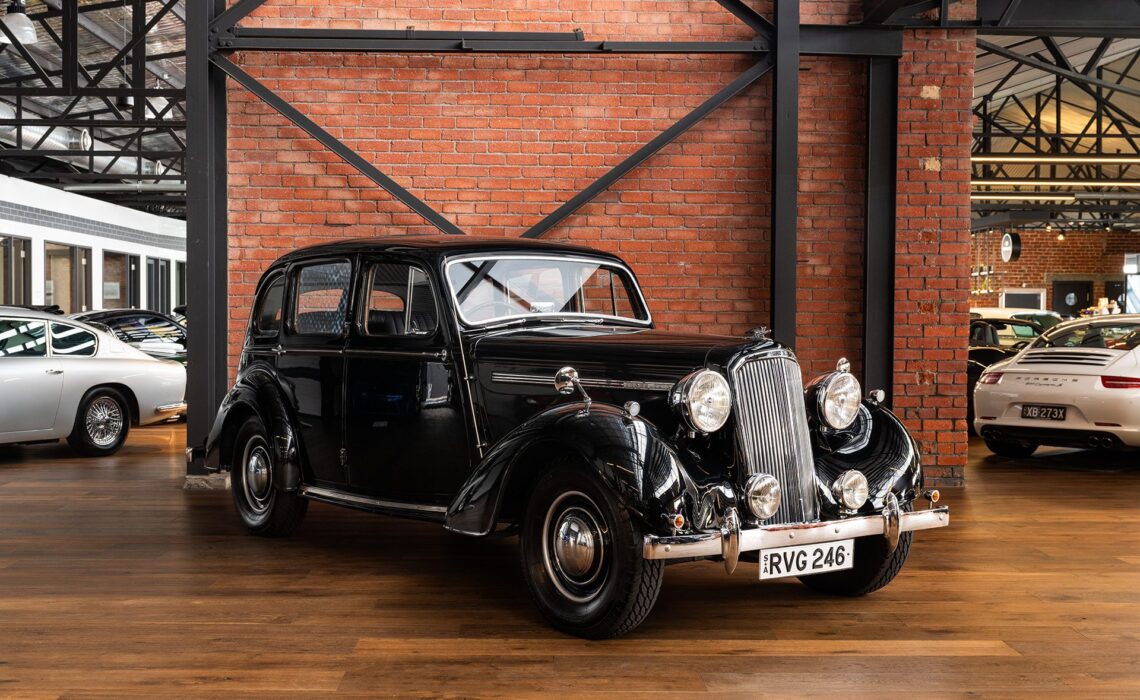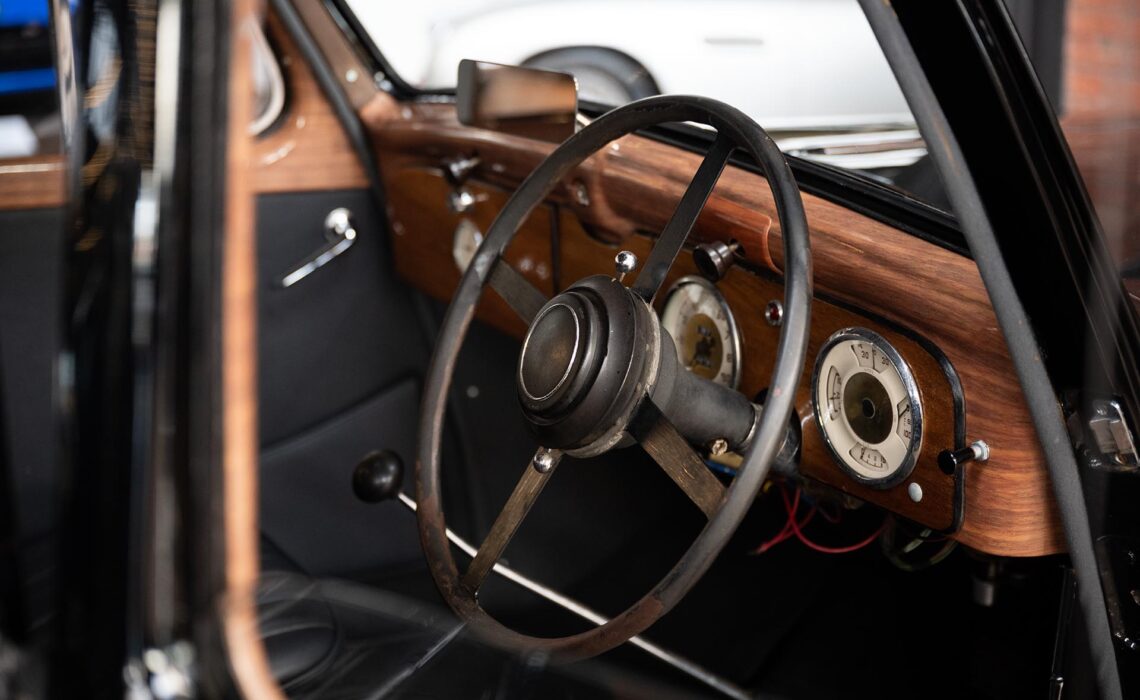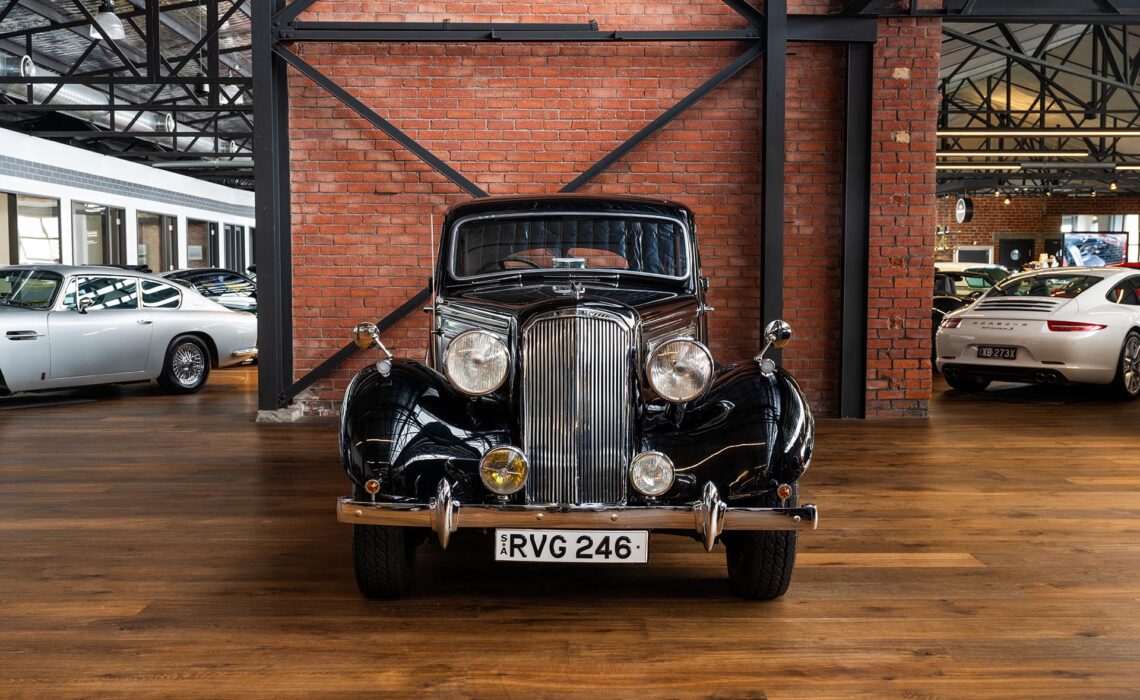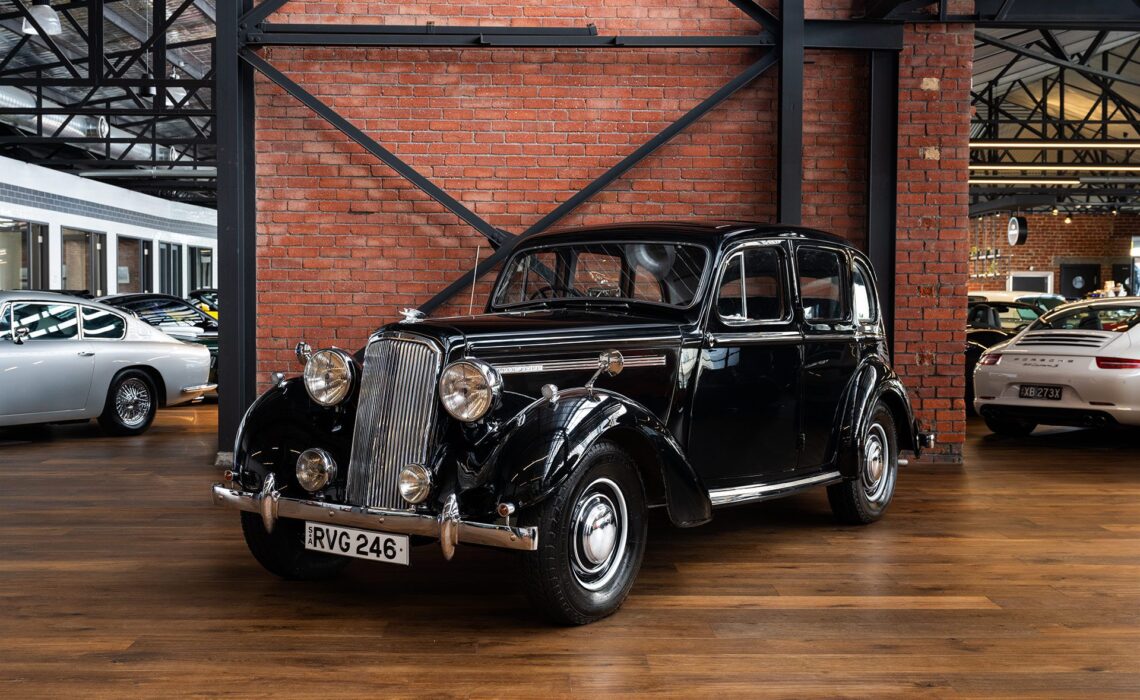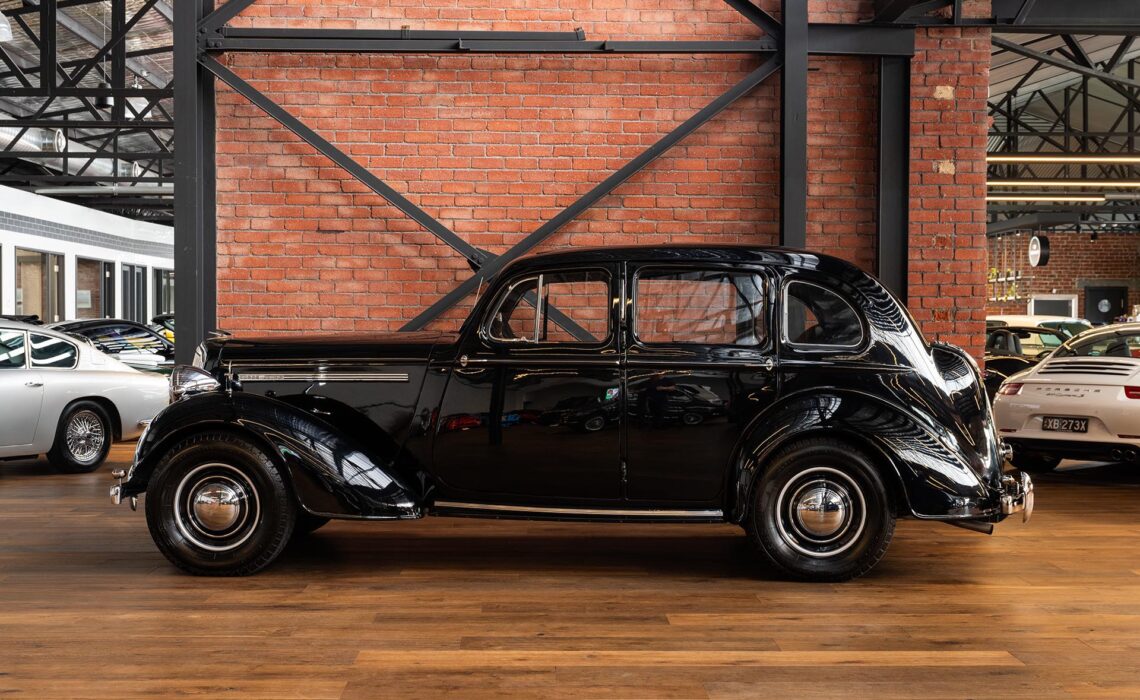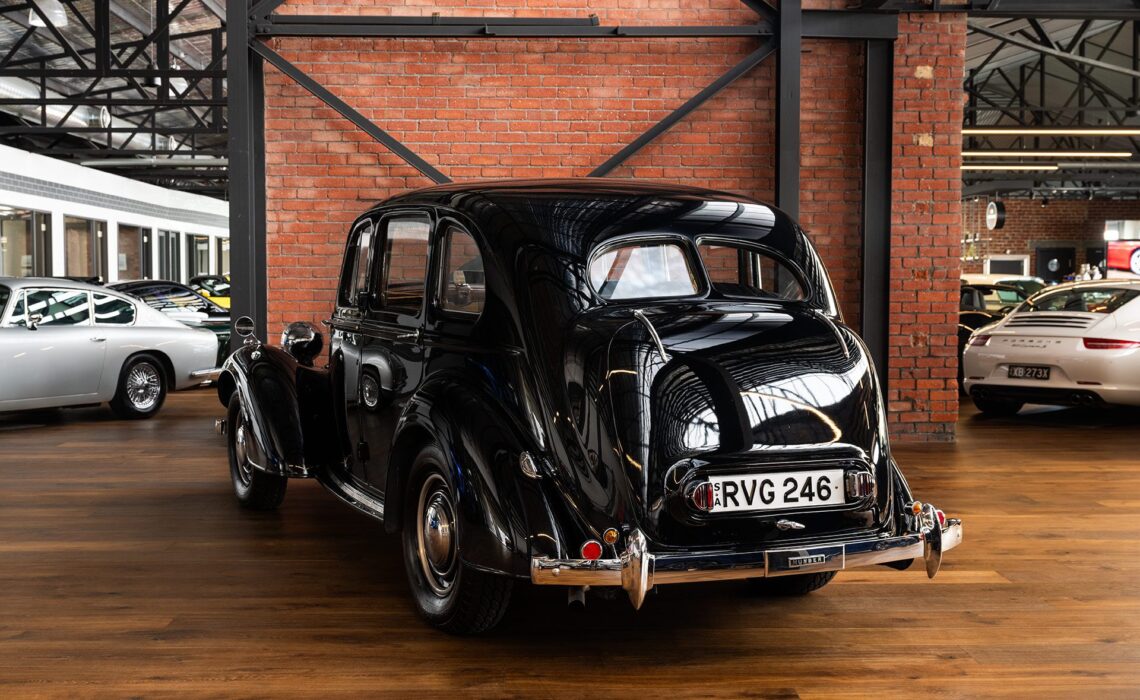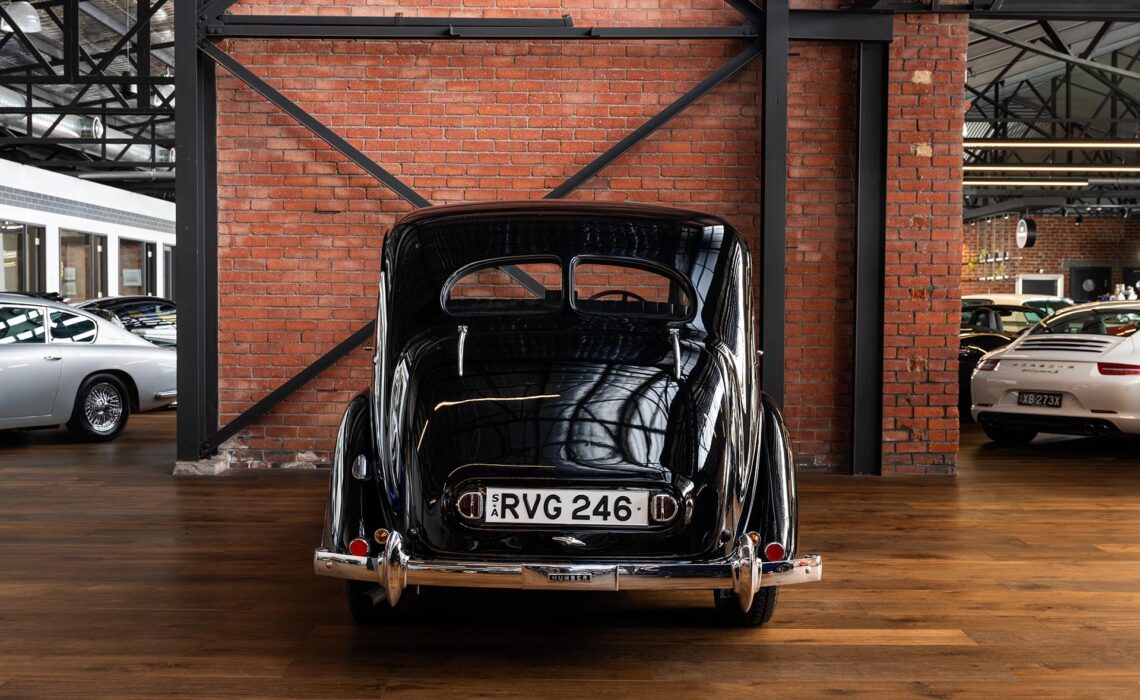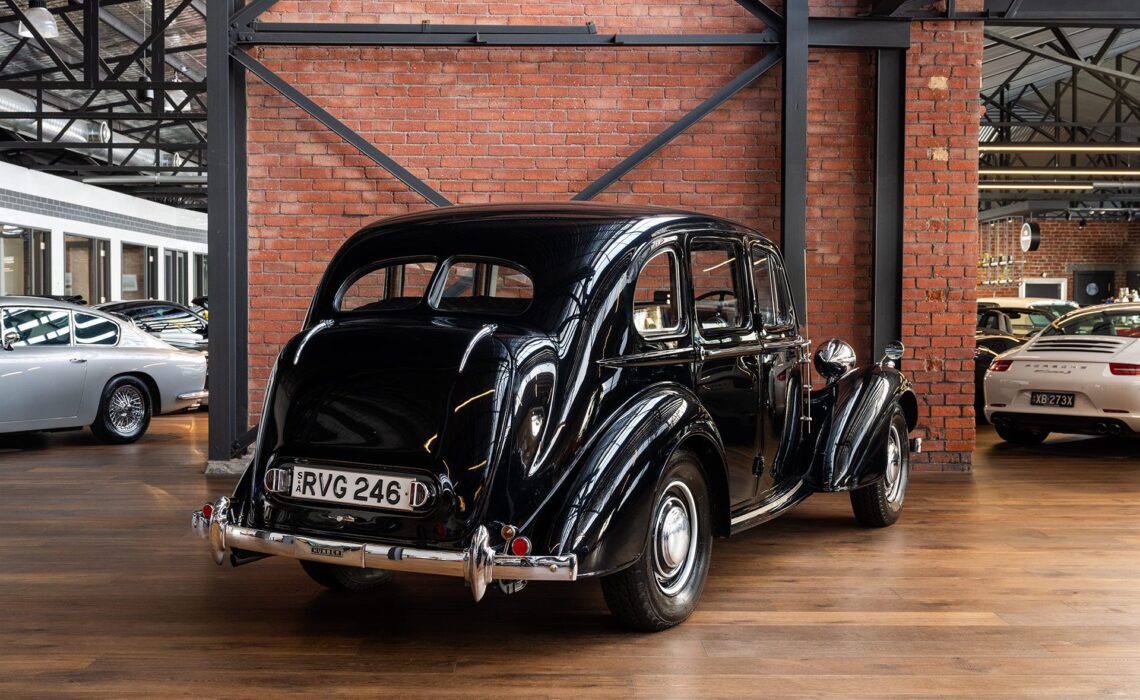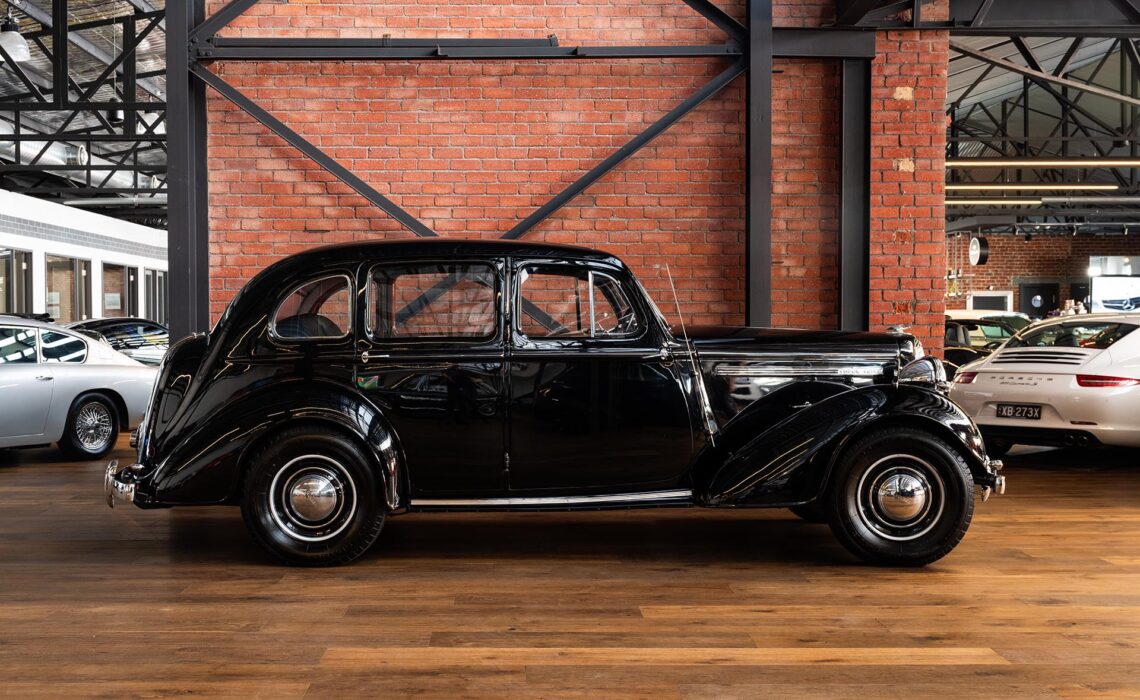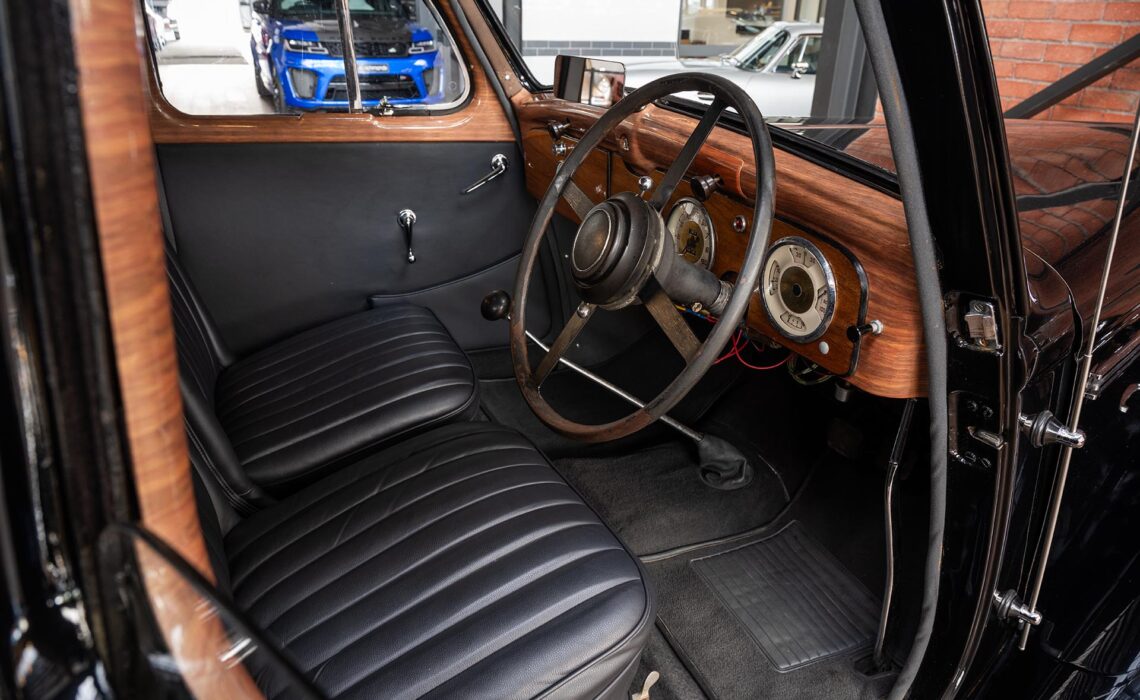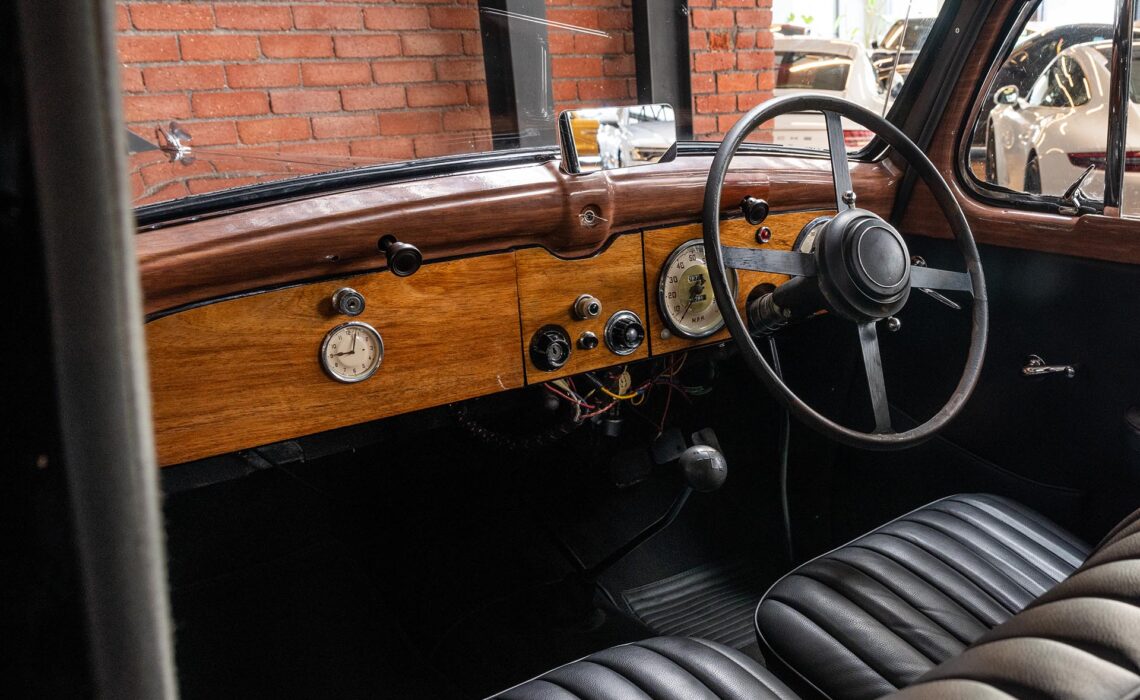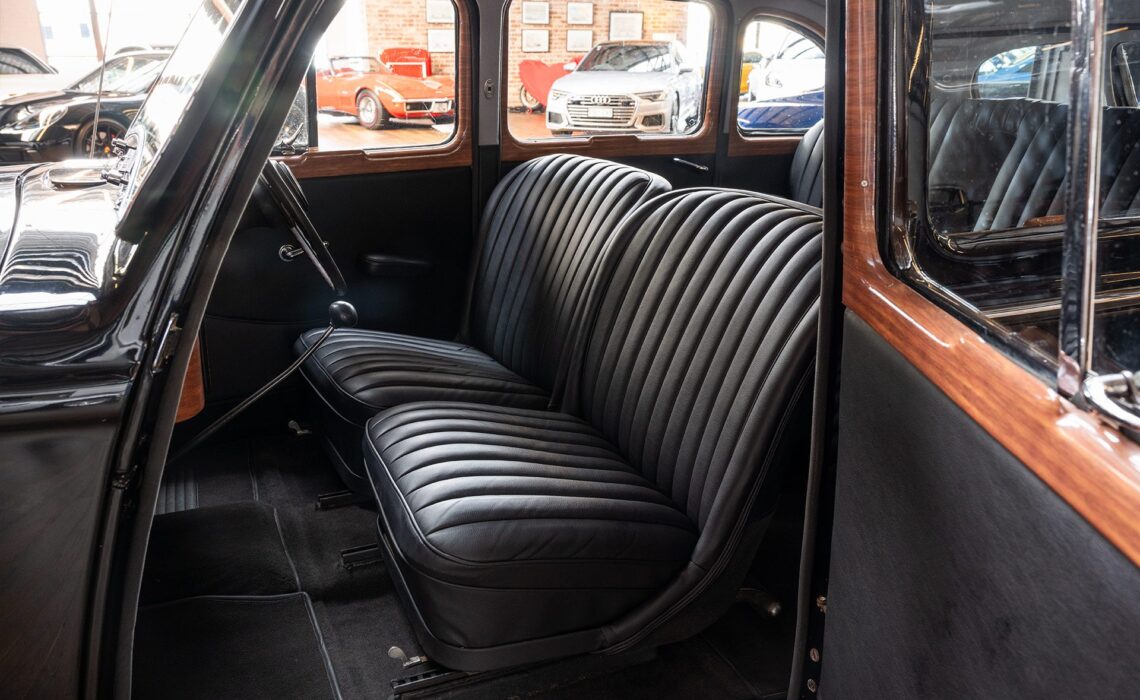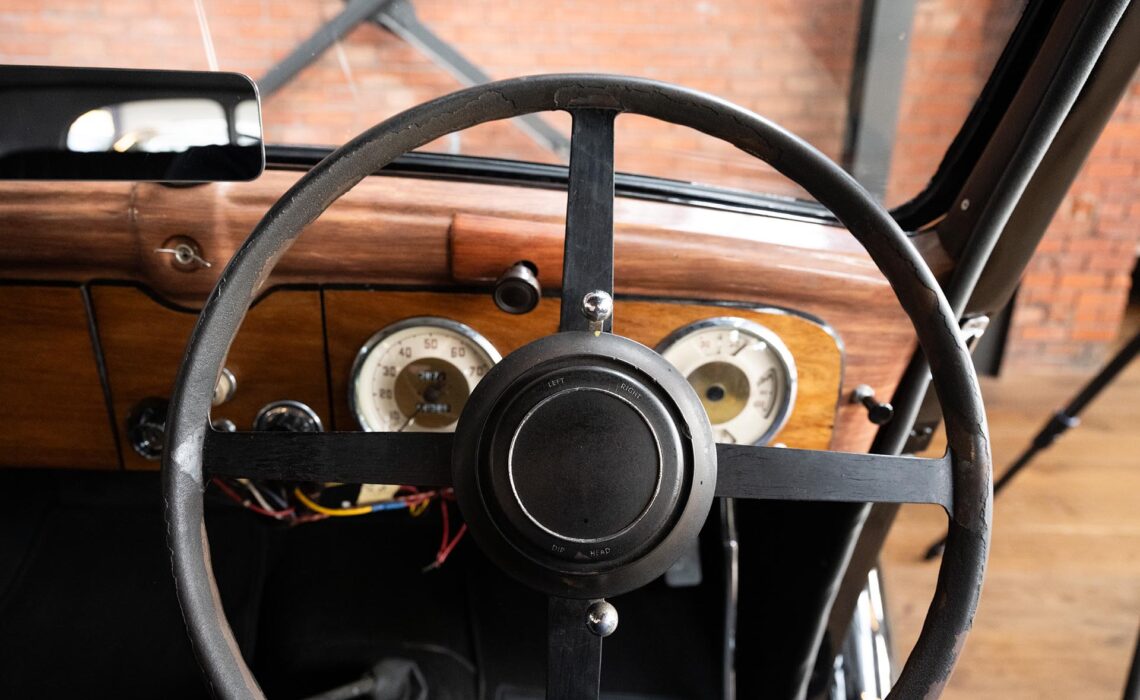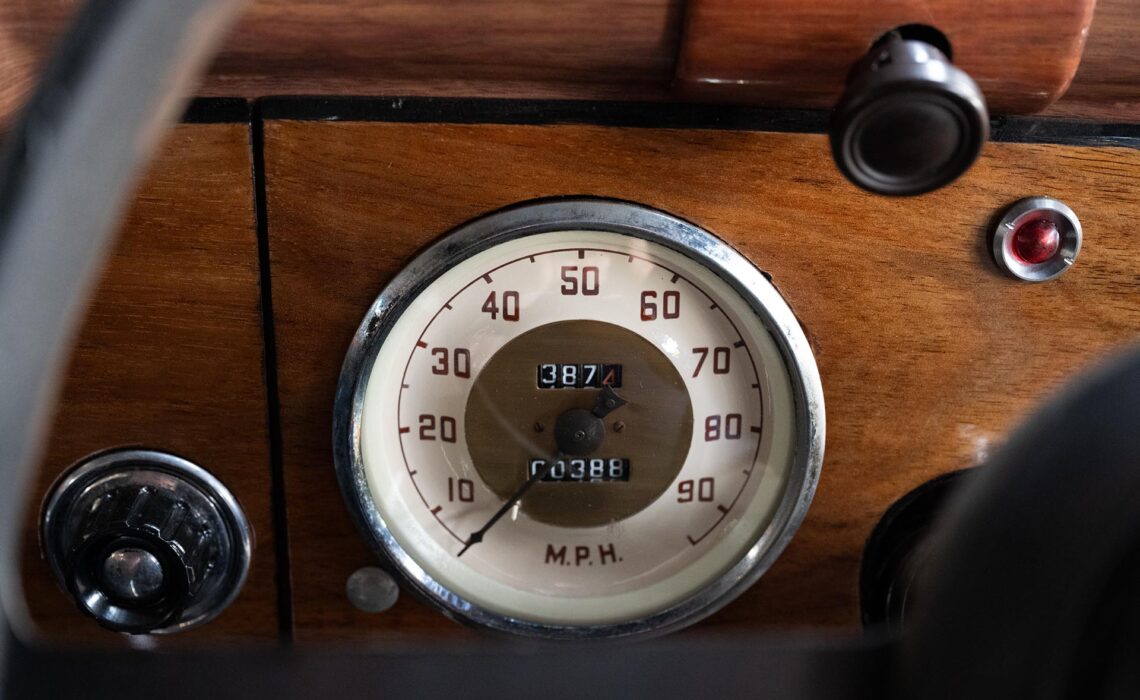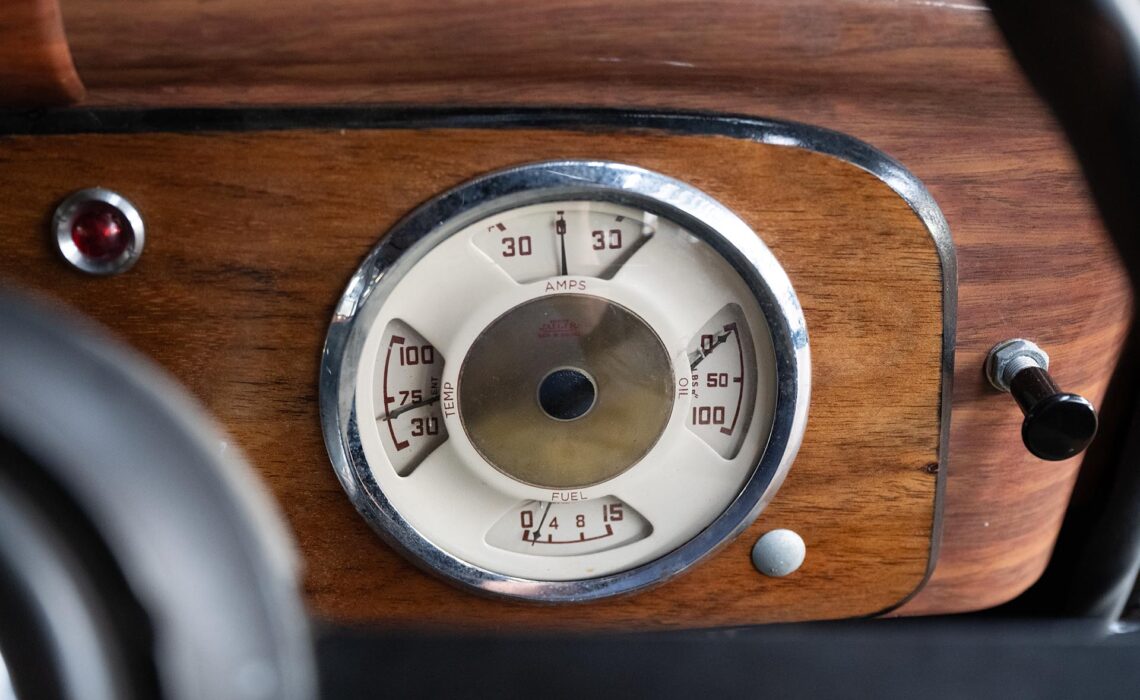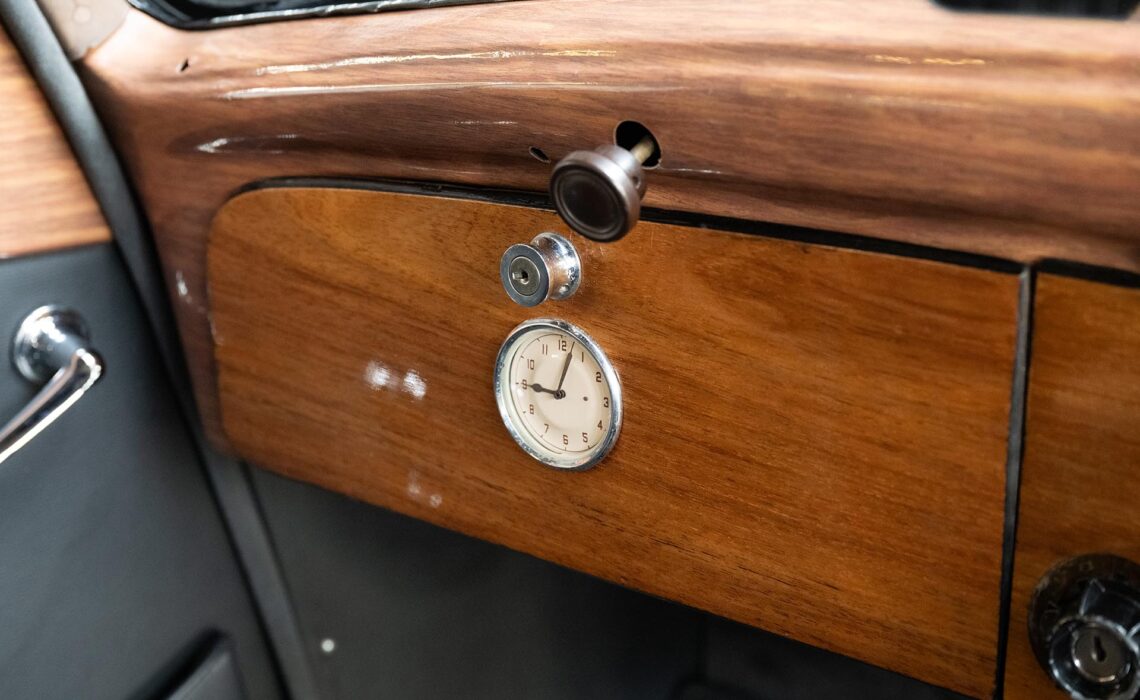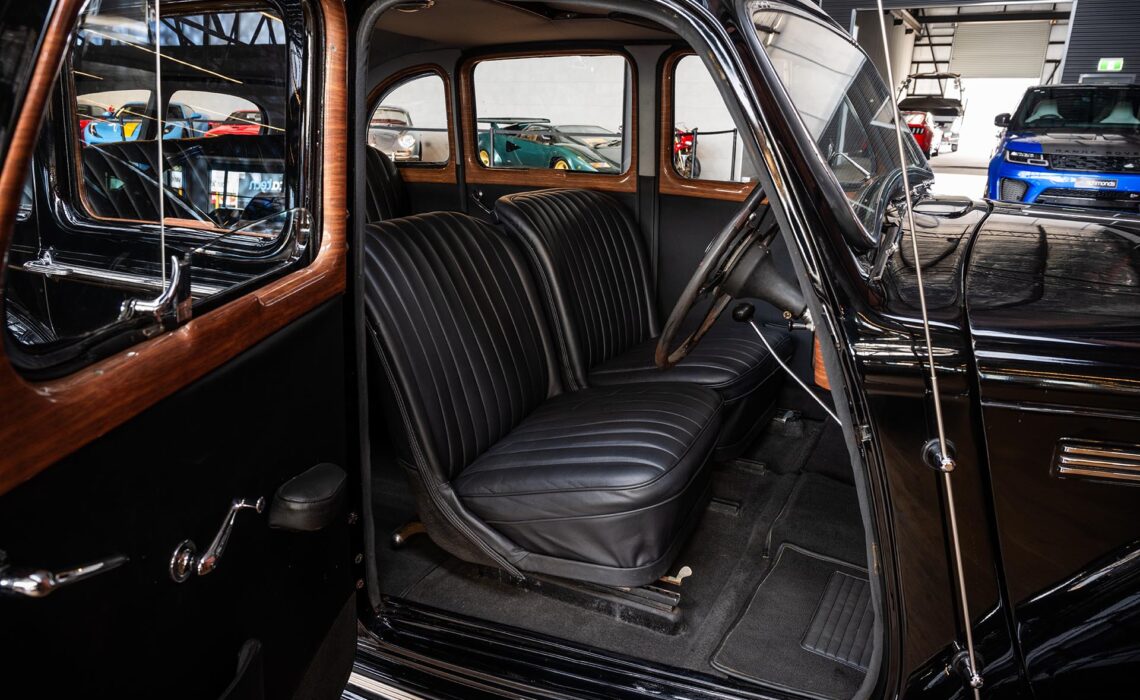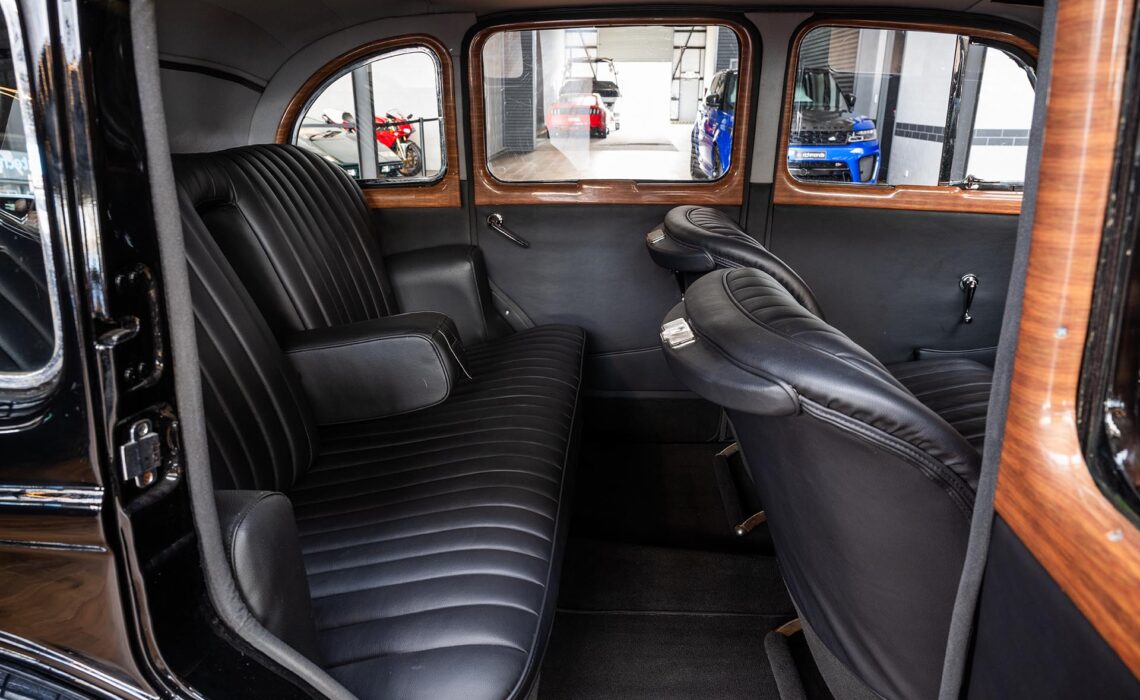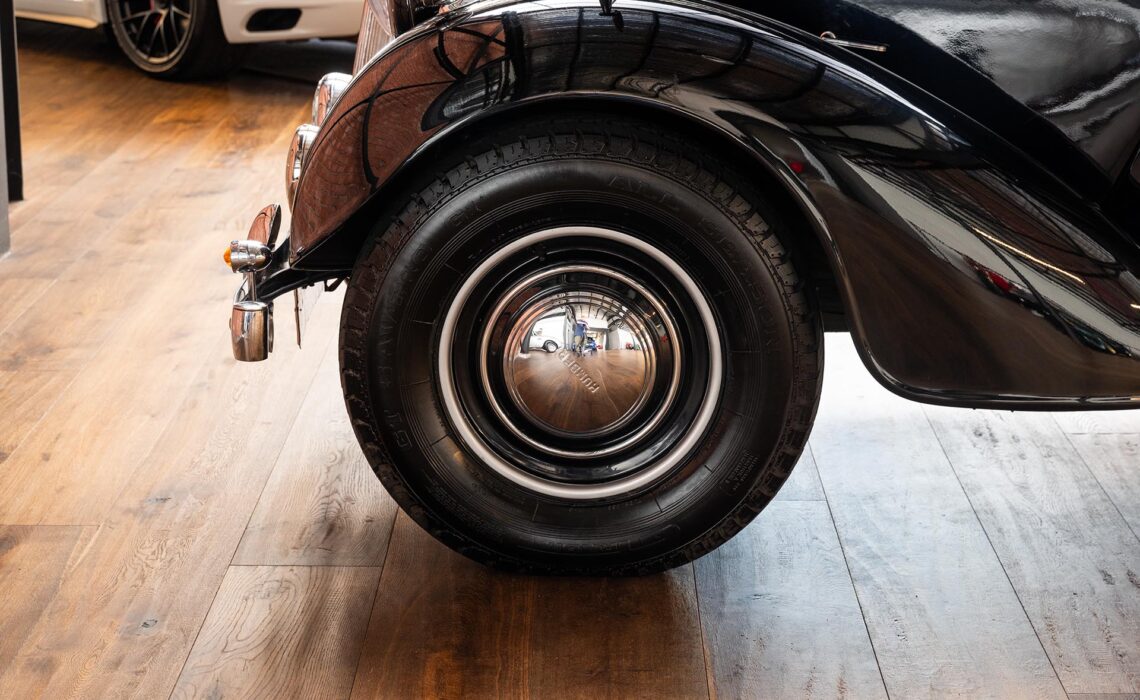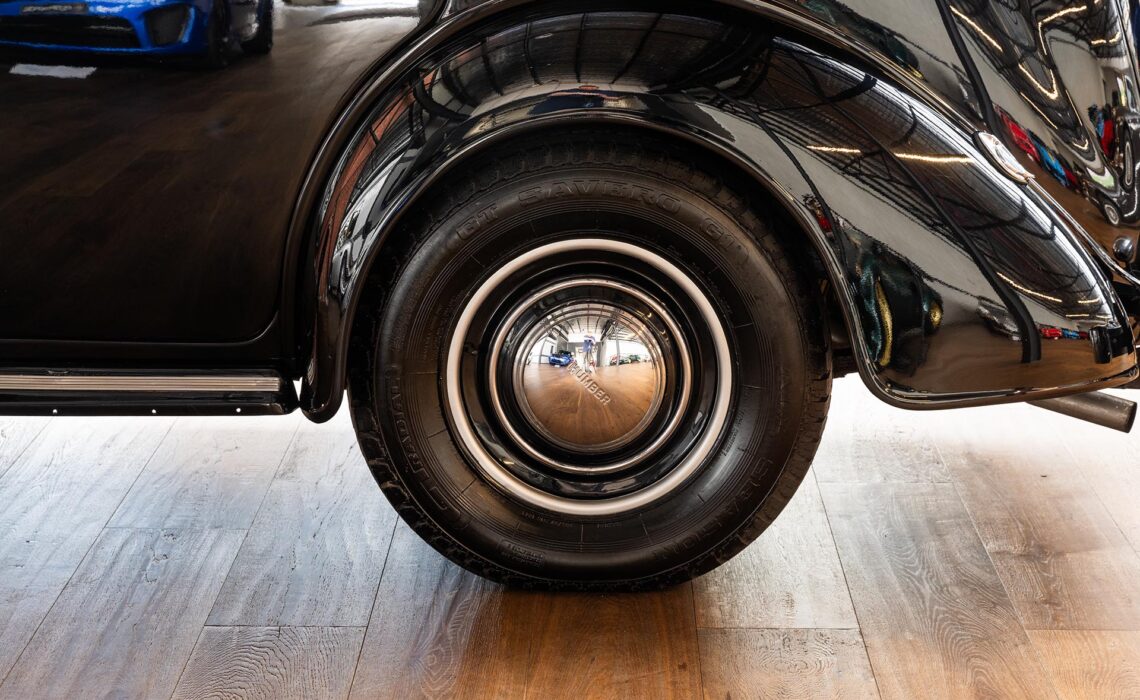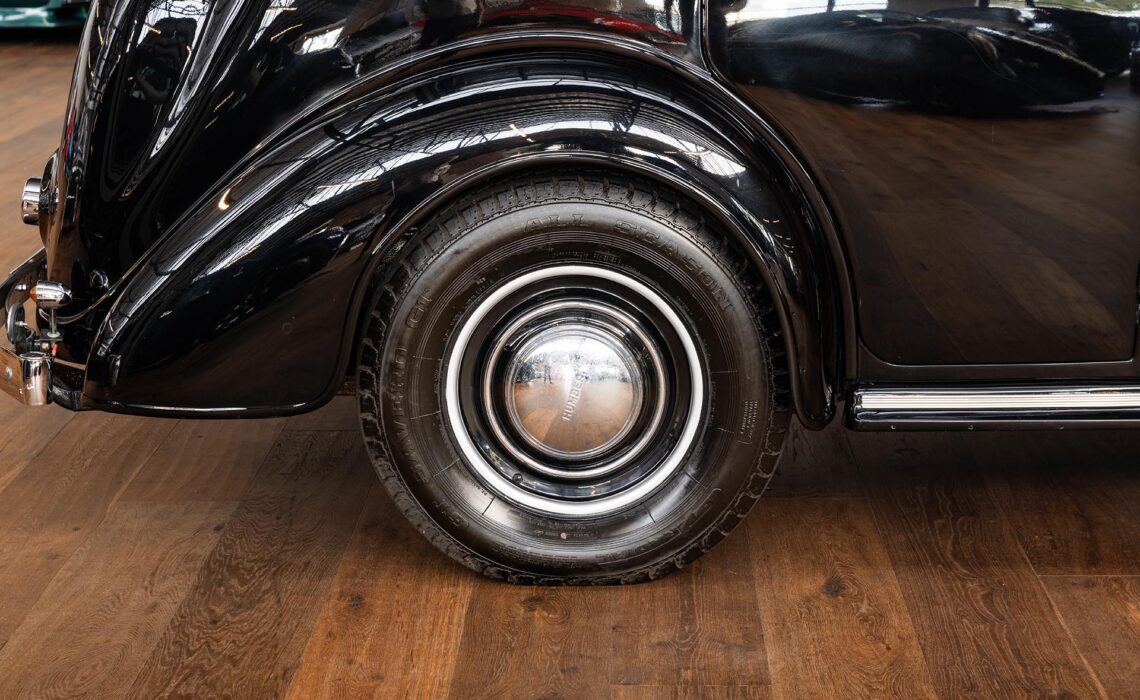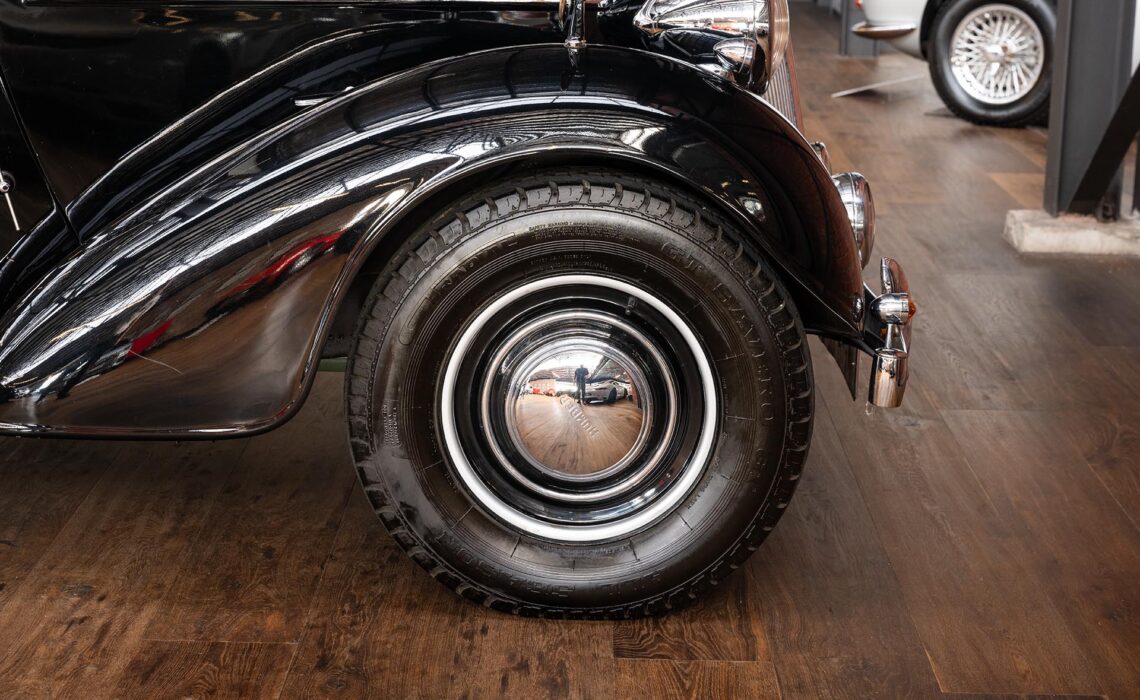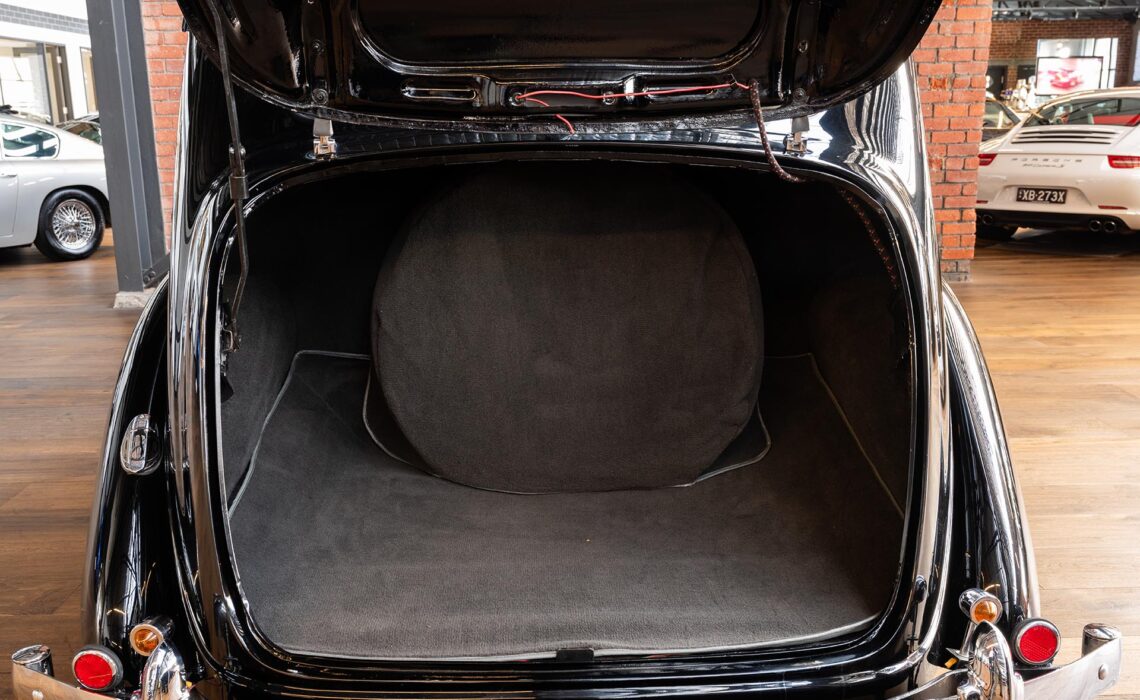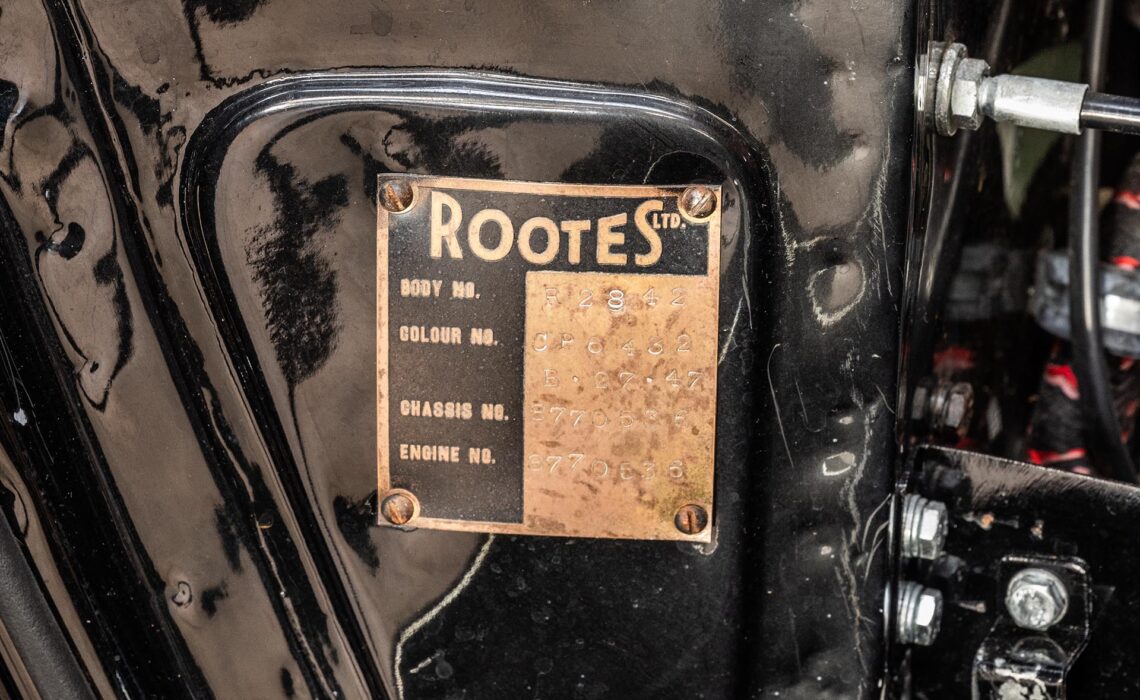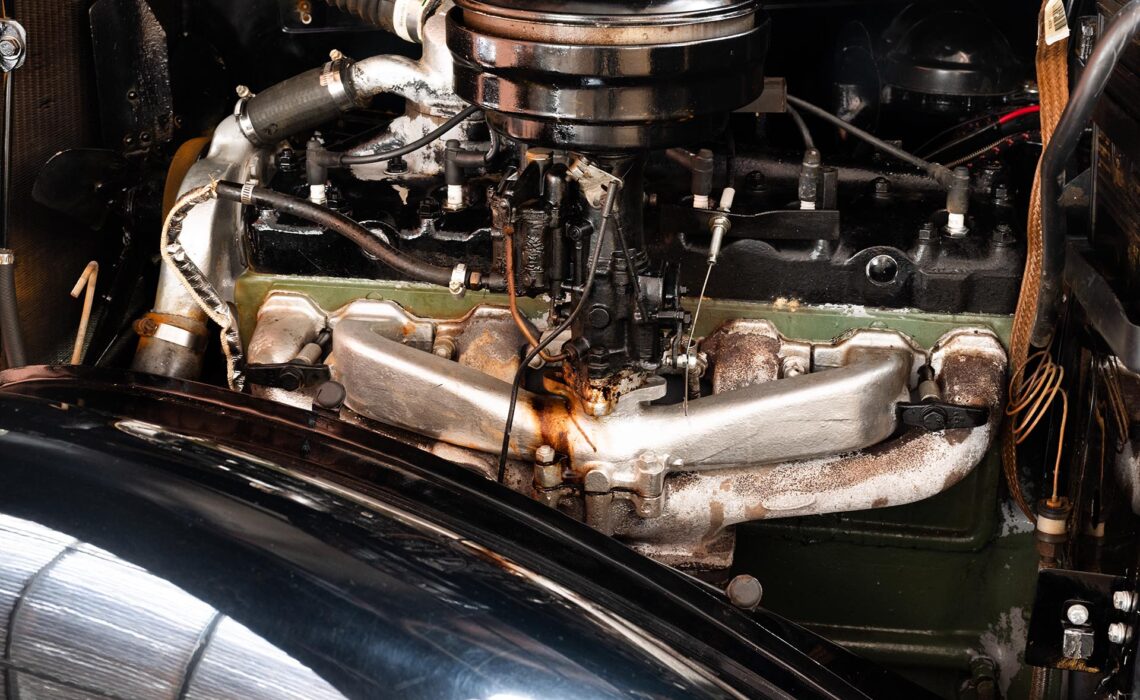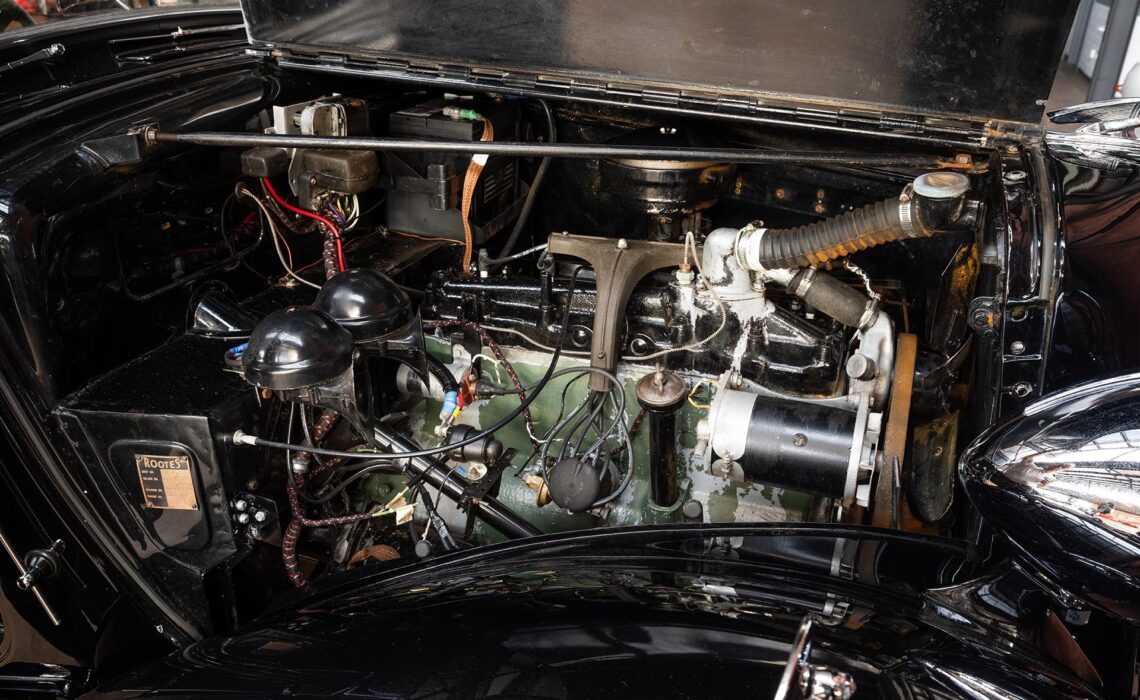1946 HUMBER SUPER SNIPE MK1- 388 MILES SHOWING
Presenting in Black with Grey interior trim.
Quite a rare car by todays standards and has been in the one South Australian ownership since 1971.
Powered originally by a 4.0 Litre 6 cylinder engine, it produced when new 74.5Kw and 269Nm of power and torque delivered to the rear wheels via a floor mounted 4 speed manual gearbox. Performance was gentlemanly, 0-100kph in 19.9 secs and a top speed not much further ahead, near 130kph.
These cars were commonly used as both military staff cars during the war and for dignitaries, mayors and governors shortly after the war. Some history below:-
Name: Super Snipe
Make: Humber
Year: 1943
During the Second World War, many of Coventry’s car makers turned to the manufacture of aircraft, vehicles and armaments for the war effort. Daimler and Humber were prominent in the manufacture of scout, armoured and staff cars.
This open top tourer based on the Humber Super Snipe chassis, with body work by Thrupp and Maberly, was used by Field Marshal Montgomery from the D-Day landings until the end of the war in Europe. Montgomery preferred Humber staff cars, as he had used a very similar vehicle in the North African campaign, and it had proved so reliable he called it ‘Old Faithful’.
The Humber Super Snipe became known as the ‘Victory Car’ for obvious reasons. Monty’s preference for this model was shown when his car fell into the sea off Mulberry Harbour just after the D-Day landings. Monty ordered it to be salvaged and prepared for his use, and within 24 hours the car was running again.
In the campaign this car covered over 60,000 miles in just under 6 months and needed no servicing other than the normal routine maintenance.
After the war it was returned to the Rootes Group, who owned Humber, and was used in numerous victory parades around the country.
The owner has been long involved with this car and he has given us this unique story about its past since 1971.
“As to the Humber. I bought it in 1971 when I was still at school. It was in quite good condition, although one of the first things I did was
to have painted black (from the original drab military grey). I drove it for a few years while at school and also after I started Uni. I then
put it in my Mum’s garage to hibernate for many years while we had our family and renovated and extended two houses and also
brought up our children (although it was used as our wedding car in 1975). I always intended restoring it to a beautiful condition when I
could, although that had to wait until our children had left home.
Restoration took place over a long period. It started in the mid-late 2000’s when it was taken out of hibernation with the intention of
first being painted. I took it to an excellent painter in around 2008; he was very slow though, which didn’t bother me unduly, and had
just finished in 2012 when he was sadly murdered.
The car was immediately moved to a mechanic friend at Inglewood and he started working on the mechanical side of things. In
particular, I’ve bought a donor car (a Super Snipe MkII). The current car is not now a matching numbers car, as the engine from the MkII
was transferred to my car. Some other work was done, including using the MkII radiator, which was in much better condition than mine.
At that time I also started having the chromework restored: bumper bars, headlights, door handles, window winders, radiator grille and
so forth. The car was housed under cover next to the workshop (of course, given that it had been painted it had to be properly
protected under cover). The painting was exceptional, as my intention always was to restore the car to the highest possible standard.
The re-chromed parts (excluding the radiator grille) were kept in the mechanic’s shed. Unfortunately the paintwork on one side was
damaged when a fire went through the property in early 2015. Some of the chrome- work and a couple of the doors were in the shed
and were damaged beyond repair.
I had to make up my mind whether to continue the restoration or give up. However I saw it as a labour of love, and something that I
had been intending to do since the 1970s. So I decided to go ahead once again with the restoration. I decided to have the car completely
repainted. It was fully repainted in two-pack paint. I obtained replacement doors and bumpers beforehand from another MkI. The
bumpers, headlights, door handles, window winders and other chromework was redone, once again to a beautiful standard, by the
same specialist chromer at Lonsdale who had done it originally
At this point, the interior had to be done. This included the roof lining, carpets, interior door sides, woodwork and instruments. (The
seats had previously been done and were not in the car when the fire occurred.) All work was done to exacting standards, and as you
can see the beautiful interior quality, including seats, as well as the exterior. All of this work was done by separate professional. Interior
trimming (roof lining and carpeting); woodwork, instruments, etc, were all done by specialists in their field.
Finally, I had the mechanicals repaired by a classic car mechanic. New wiring loom, shockers, electrical work, new chrome blinkers (from
England), two exhaust silencers (both on the single exhaust), wipers and so on. All of the work and parts iinvoices are contained in the
paperwork. This was largely finished by early 2017, but although my mechanic formally retired around the time of Covid, he has
continued to work on the car gratuitously. Most recently, within the last couple of months, he relined the rear brakes, which are yet to
properly bed in.
The odometer shows the mileage that I have travelled since the restoration was finished. It was returned to zero on the completion of
the restoration) For health reasons I then had the car stored safely for a number of years. It has been looked after over this time. Once
again, for health reasons, I have not been able to use the car as I had intended. The total restoration cost a small fortune – considerably
more than I am asking now.
I have extensive records of work done over many years during and after the restoration commenced, although as I said, more recent
work over the last two or three years has been done gratuitously. The quality of the car and the restoration is obvious to anyone. The
car starts quickly and as you will have seen, the engine sounds strong, and has a good deal of torque with its side-valve 4 litres.
I have some spare parts, most particularly an unrestored front grille. I have an original Instruction Book that came with the car, an
original Humber sales brochure, as well as some contemporary magazines and a number of contemporary advertisements. I also have
an original parts manual.
Two things I couldn’t fix properly. I wasn’t able to source the part to open the front window. Also, while I was able to get a part to open
the glovebox, it doesn’t hold the glovebox closed, so you’ll see that it remains shut by a very fine wire, which works and is also invisible.
I have taken many photos of the car pre-restoration, as well as during restoration and post-restoration. These have not been
consolidated, and most have not been printed. Some have been printed, but not that many.”
A very interesting a well kept example of a post war Humber Super Snipe that would make a perfect car for Classic events like the Bay to
Birdwood in Adelaide and also classic car events and shows.
Currently under Historic registration in South Australia, which is not transferable, however the car is eligible in most jurisdictions for
similar schemes, which equates to minimal on road costs.
Available to inspect on our showroom floor in Adelaide..
We can arrange transport door to door Australia wide.
We welcome the opportunity to consider your trade in.
| Make: | Humber |
| Model: | Super Snipe Mk1 |
| Built: | 1946 |
| KM: | 388 Miles |
| Engine Size: | 4000cc |
| Cylinders: | 6 |
| Transmission: | Manual |
| Price: | Sold |

